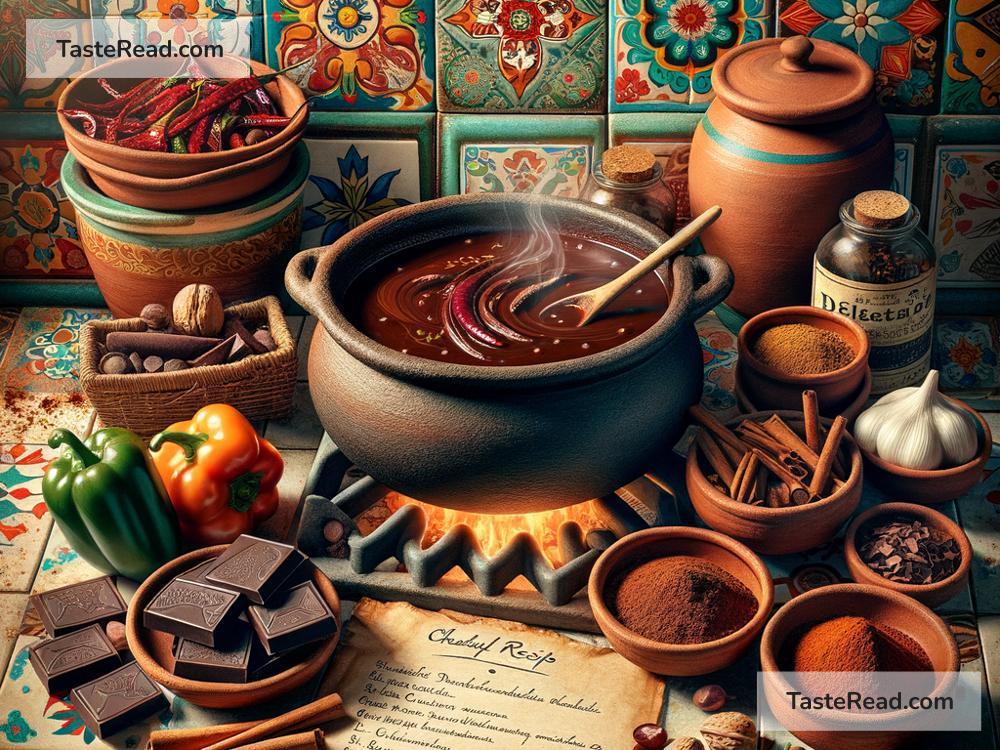The Origins of Mexican Mole Sauce: An Iconic Dish With a Rich History
Mexican mole sauce is one of the country’s most famous and beloved dishes. Known for its complex flavors and wide variety of ingredients, mole has been a staple of Mexican cooking for centuries. But where did this delicious sauce come from, and how did it become such an important part of Mexican cuisine? Let’s dive into the fascinating origins of mole and explore how it became the culinary treasure it is today.
What Is Mole Sauce?
First, let’s talk about what mole sauce is. Mole is a rich, thick sauce often served over meat, vegetables, or rolled into enchiladas. It has a deep flavor profile, thanks to its unique combination of ingredients, which can include chili peppers, chocolate, nuts, seeds, fruits, spices, and even bread. The word “mole” comes from the Nahuatl word mōlli, which means “sauce” or “mixture.”
There isn’t just one mole sauce. In fact, there are many regional variations depending on where you are in Mexico. Some of the most famous types are mole poblano (from Puebla), mole negro (from Oaxaca), and mole verde (green mole). While each recipe is different, all mole dishes share the trademark richness and imaginative use of ingredients.
The Indigenous Roots of Mole
The history of mole dates back hundreds, if not thousands, of years. Indigenous communities in Mexico were already making sauces and mixtures using local ingredients long before the arrival of the Spanish colonizers in the early 1500s. Native peoples like the Aztecs and Maya used chili peppers, tomatoes, and spices in their cooking, creating bold and flavorful dishes.
One of the key influences on mole’s origins comes from the pre-Hispanic tradition of grinding ingredients on a stone tool called a metate. The metate allowed cooks to grind chilies, seeds, and other elements into a smooth paste, forming the base of many sauces. Mole’s basic technique—combining and grinding ingredients—began in these early kitchens.
Chocolate also has ancient ties to Mexican cooking, particularly in the Aztec empire. While the Aztecs didn’t mix chocolate with savory ingredients as we do today, they used it in drinks and rituals, which established it as a significant part of their culture. This connection to chocolate eventually worked its way into some mole recipes, especially mole poblano, which uses chocolate to add a subtle sweetness and complexity.
The Spanish Influence
When the Spanish colonizers arrived in Mexico, they brought with them new ingredients and cooking techniques. They introduced spices like cinnamon, cloves, and black pepper, as well as nuts like almonds and modern sugar. These ingredients began to blend with the native foods and styles of cooking, creating fusion dishes like mole.
The use of European techniques, such as frying ingredients in lard and thickening sauces with bread or nuts, added new layers to traditional recipes. Over time, mole became a perfect example of Mexico’s mixed cultural heritage: a combination of indigenous traditions and Spanish innovations.
The Famous Legend of Mole’s Creation
While mole’s origins are deeply rooted in history, there’s also a popular legend about how mole was first made. According to this story, mole was created in the 17th century by nuns in the Santa Rosa convent in Puebla. The nuns were asked to prepare a meal for a visiting bishop but didn’t have many ingredients on hand. So, they gathered scraps from their kitchen—a mix of chili peppers, chocolate, spices, and nuts—and ground them together. The result was a deliciously unique sauce that impressed the bishop and became a culinary sensation.
While this story may be more myth than fact, it reflects mole’s reputation as a dish of creativity and resourcefulness. Chefs and home cooks often work with the ingredients they have to create their own version of mole, making it a personal and adaptable recipe.
Mole’s Importance in Mexican Culture
Today, mole is much more than a sauce—it’s a symbol of Mexican identity and pride. Mole is often made for special occasions and celebrations, including weddings, birthdays, and Día de los Muertos (Day of the Dead) festivities. Preparing mole is considered an act of love, as the process takes time, patience, and skill. Some mole recipes demand hours or even days to cook, with the ingredients handled carefully at every step.
Regional variations of mole highlight Mexico’s diverse culinary traditions. Oaxaca, for example, is known as the “Land of the Seven Moles” due to its many unique recipes, including mole negro, mole rojo, and mole amarillo. Each region adds its own local touch, making mole a food that represents the richness of Mexico’s flavors and history.
Mole Today
While traditional mole recipes remain popular, chefs and cooks continue to innovate with new versions of this beloved sauce. Some use modern techniques or tweak the ingredients to suit contemporary tastes. Mole has also gained international attention, with fans around the globe appreciating its complex flavors and cultural significance.
For Mexicans, mole is more than just a dish—it’s a connection to their heritage and history. Whether served at a family gathering or a fancy restaurant, mole tells the story of Mexico’s creativity, resilience, and fusion of traditions.
Conclusion
The origins of Mexican mole sauce are as rich and complex as the dish itself. From its indigenous roots to its Spanish influences, mole represents the blending of cultures and the joy of cooking. Whether you’re enjoying a classic mole poblano or trying a new variation, you are tasting centuries of tradition and artistry. Mole is not just food—it’s a celebration of Mexico’s past, present, and future.


